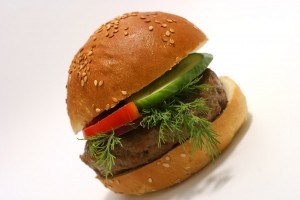What does low fat or reduced calorie really mean?
With the holidays rapidly approaching many of us are starting to scan recipes and plan menus – which means grocery shopping. It also means trying to balance out the excess calories from holiday meals with some “lighter” fare – which also may mean grocery shopping.
Walk down the aisle – just about any aisle – in the supermarket and the labels on packages are plastered with claims of low fat, no fat, low this, low that, and extra lean.
What a dilemma! Sounds great, all of this reduced fat and light or “lite” food – but what does it really mean? Does light mean that the butternut squash soup is light as a feather or that it is lighter than the pea soup? Does reduced calorie mean that the chocolate mousse has half the calories of the “regular” mousse or that it’s ten calories less?
Unfortunately, the answers are not always what they seem to be. For instance, according to the FDA, a food is allowed to be labeled fat free if a serving contains less than 0.5 grams of fat. So, something could have 0.4 grams of fat and still be called fat free.
Be Aware Of Definitions – And Check The Nutrition Labels
Definitions of Some Common Terms Used On Food Packages
- Fat-free = less than 0.5 grams of fat per serving, with no added fat or oil.
- Low fat = 3 grams or less of fat per serving.
- Less fat = 25% or less fat than the comparison food.
- Saturated fat free = Less than 0.5 grams of saturated fat and 0.5 grams of trans-fatty acids per serving.
- Cholesterol-free = less than 2 mg of cholesterol per serving and 2 grams or less of saturated fat per serving.
- Low cholesterol = 20 mg or less of cholesterol per serving and 2 grams or less of saturated fat per serving.
- Reduced calorie = at least 25% fewer calories per serving than the comparison food (the “regular” version of the same food).
- Low calorie = 40 calories or less per serving.
- Extra lean = less than 5 grams of fat, 2 grams of saturated fat, and 95 mg of cholesterol per 100 gram serving of meat, poultry, or seafood.
- Lean = less than 10 grams of fat, 4.5 g of saturated fat, and 95 mg of cholesterol per 100 gram serving of meat, poultry, or seafood.
- Light (fat) = 50% or less of the fat in the comparison food.
- Light (calories) = one-third fewer calories than the comparison food.
- High fiber = 5 grams or more fiber per serving.
- Sugar-free = less than 0.5 grams of sugar per serving.
- Sodium-free (salt-free) = less than 5 mg of sodium per serving.
- Low sodium = 140 mg or less per serving.
- Very low sodium = 35 mg or less per serving.




